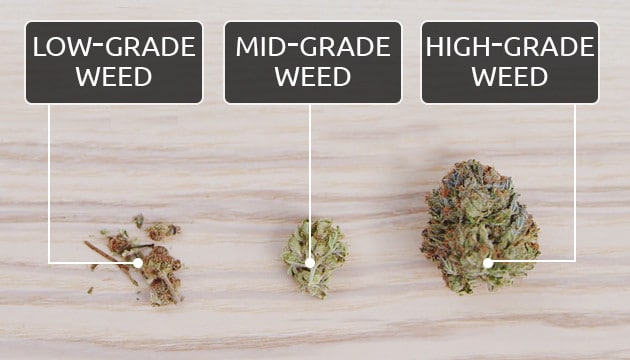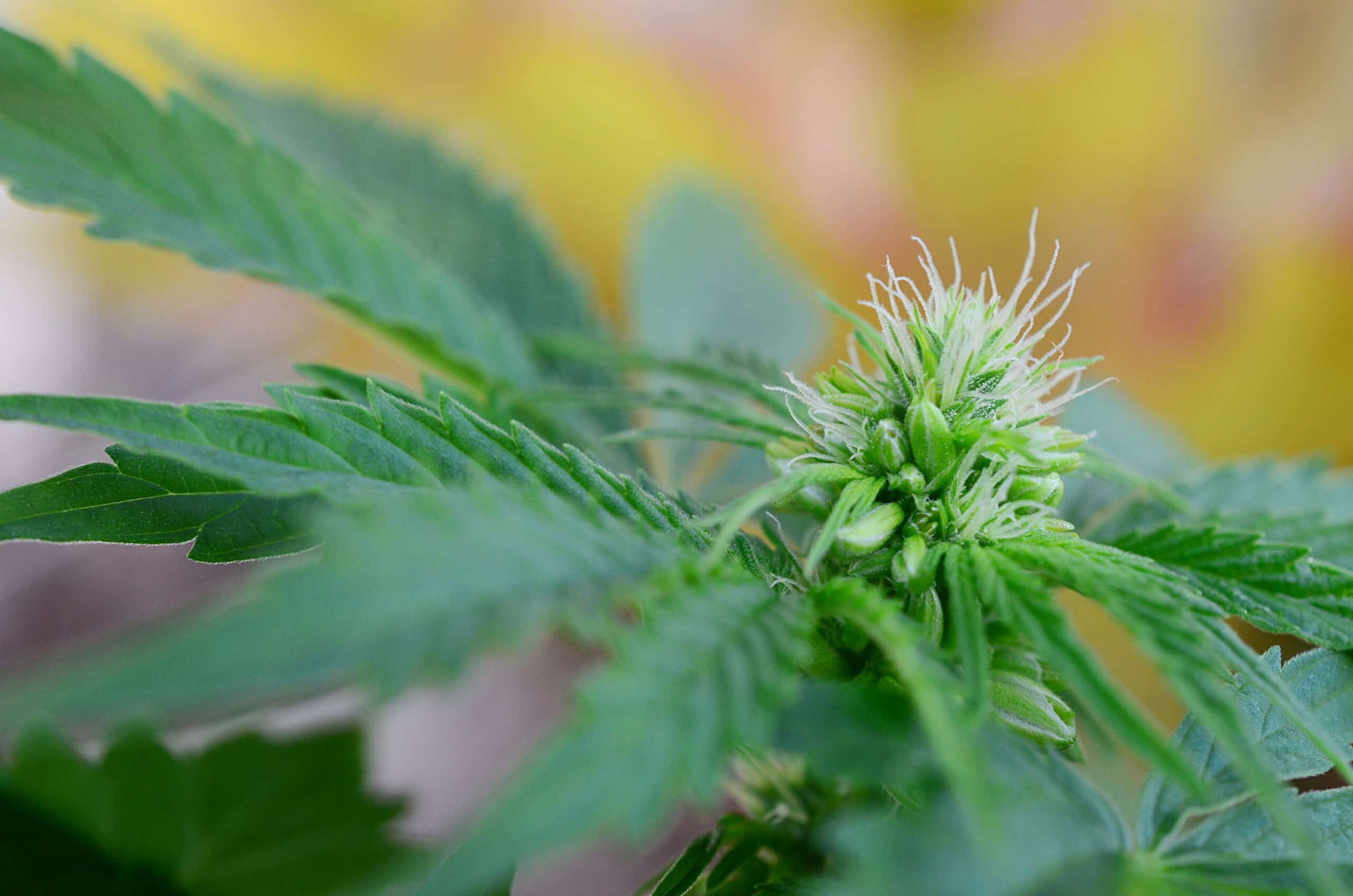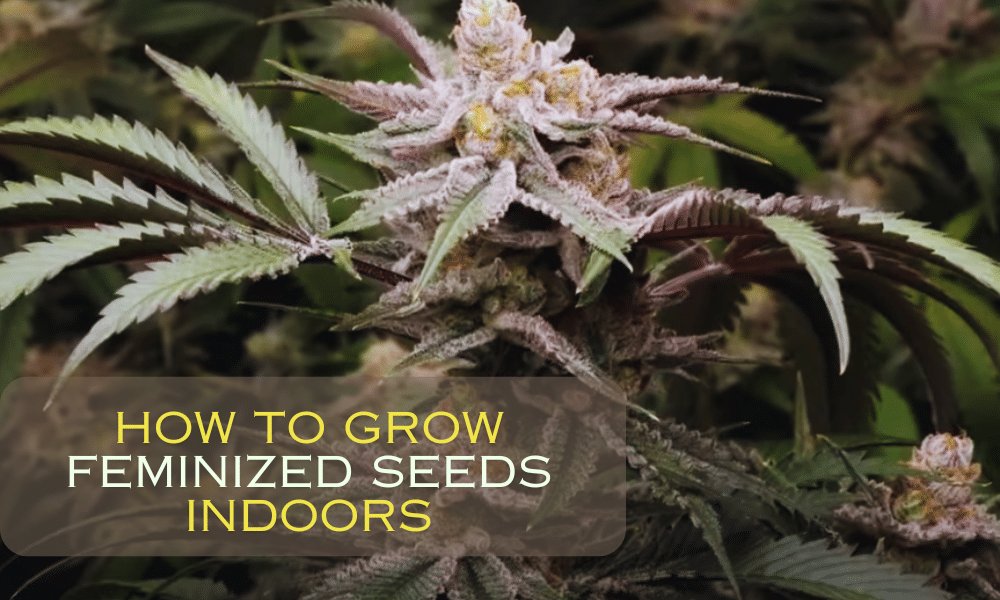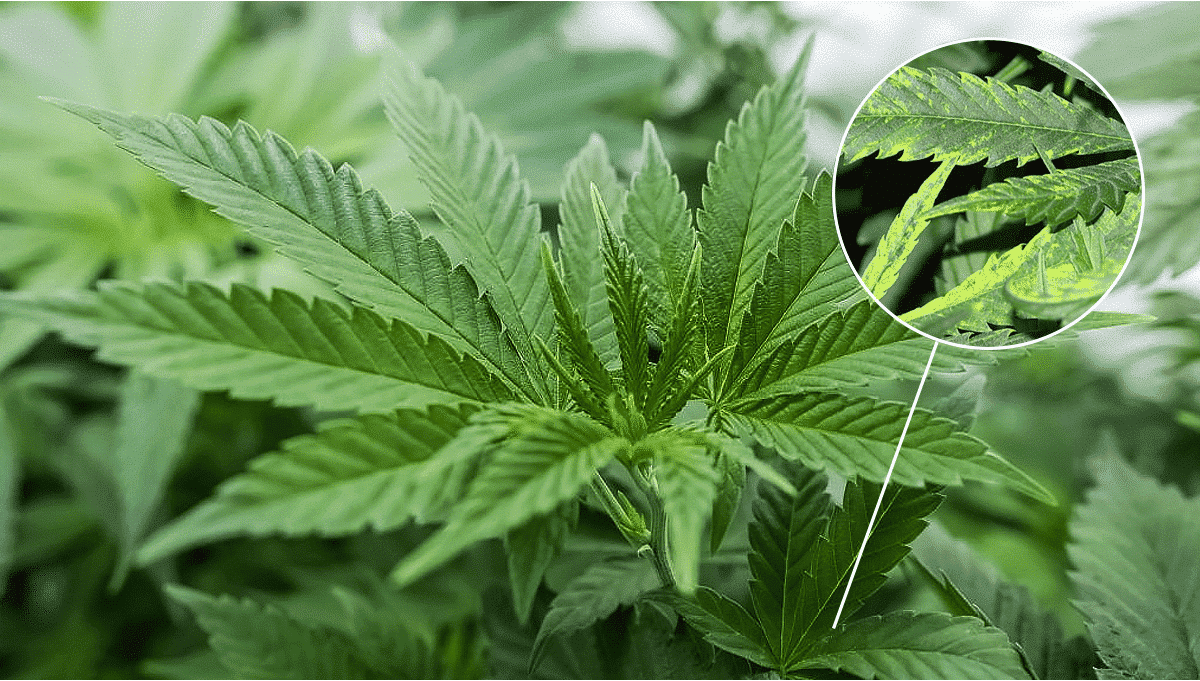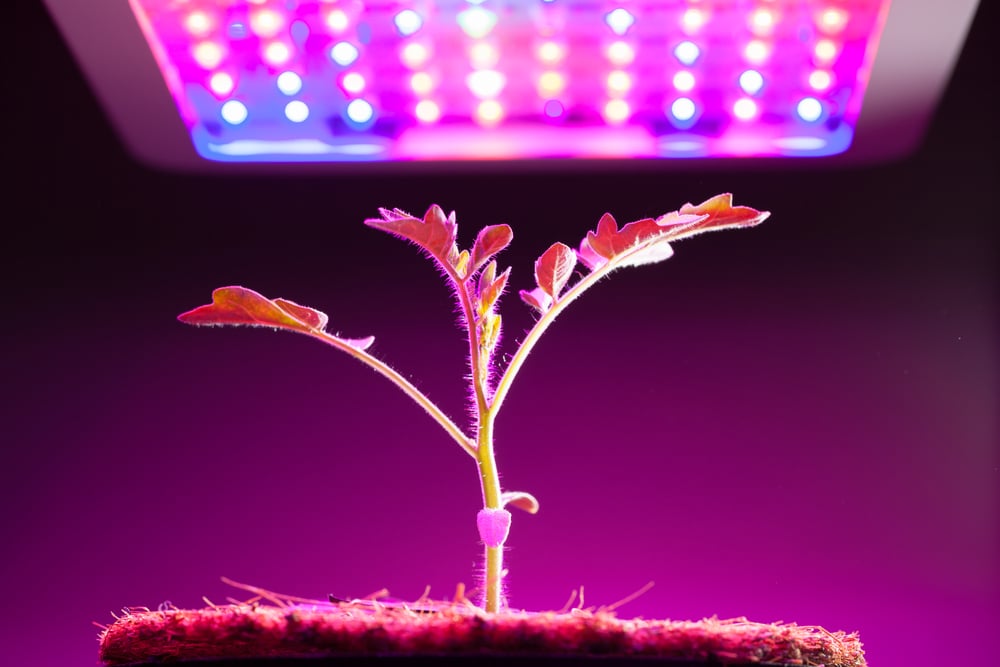What is Mid-Grade Weed? Everything You Need To Know
What is mid-grade weed?
It refers to a type that’s a step up from low but one down from high grade. As the name suggests, it’s moderately good weed.
Along your marijuana journey, you may have encountered terms like regs, headies, mids, beasters, and dank.
Mids are the most common grades to find in the US. There’s a high chance you’ve smoked one or are going to if you’re a beginner.
Other names include the thirties, B+ cannabis, or middle shelf.
Join us as we provide all you need to know about this cannabis type and how it compares to others.
The look, feel, and aroma of mid-grade weed
Mid-grade weed is a middle-ground compromise of appearance, quality, and aroma. Unlike regs, which refers to below par strains, this type comes from superior seeds.
It typically receives better care than reggie weed through the growth stages.
Mids are better priced and more popular than dank weed because they’re easier to find. Tokers may prefer them when purchasing marijuana for large gatherings like parties.
Compared to regs weed, they have more THC, the “good stuff” that provides more potency for a good time.
Below are the primary characteristics of mid-weed.
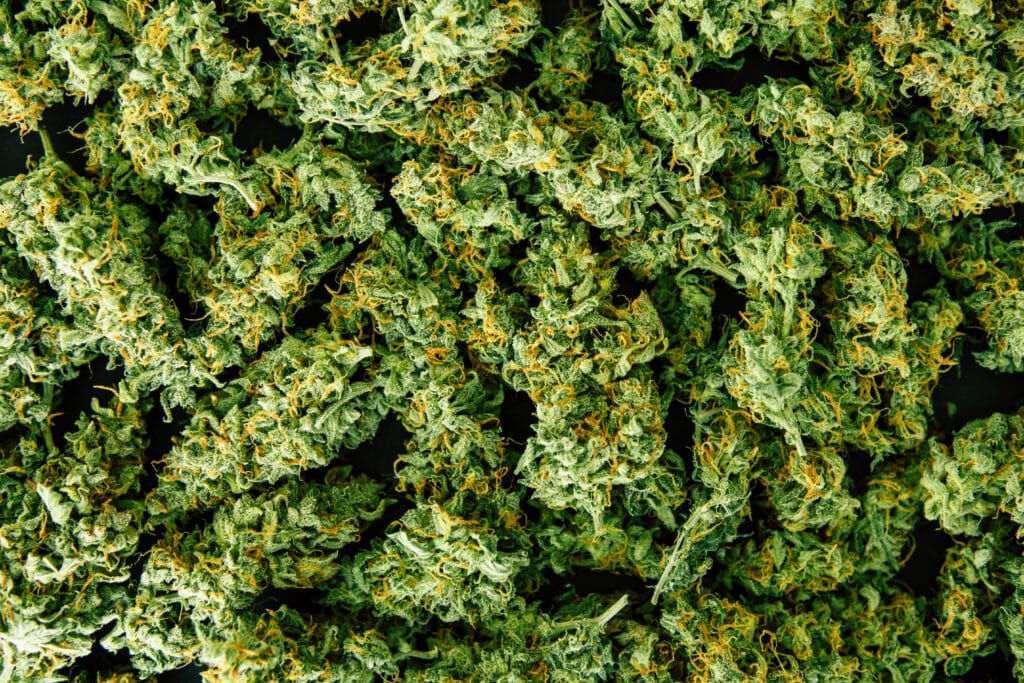
Quality of mid-grade weed
Tetrahydrocannabinol (THC) levels and cannabidiol (CBD) content are limited in mids. They have a higher concentration of the former, providing a more potent experience than reggie weed.
In the cannabis scene, many enthusiasts prefer these types as they’re good value for money. The higher quality separates them from a cheap strain you may find on the streets.
Mids are typically above-average THC strains with psychoactive content between 10 and 16%. CBD levels usually stay at 1–4% but may be higher in a specialized cultivar.
For most marijuana users, bush-league cultivars are enough to provide the desired recreational high or therapeutic value. Many users report feeling the effects after two or three puffs.
Appearance
A mid-grade weed plant has buds that are open and uncluttered. It contrasts with dank counterparts that are dense and packed together.
Mids have a pale green color with brightly painted pistils. They’re not as deep and glistening as a top-shelf strain but stand out from a lesser plant.
Medium-class strains have a better ratio of plant matter, boasting bright greens and orange hairs.
The shade of dank weed contrasts substandard types, which have a slight brown tint in their stems and leaves.
You may encounter some trichome crystals not found in reggie weed. Fewer seeds and stems also indicate more potent effects and better caliber.
Buds with many seeds, like those from ditch weed, are generally low-class and have a choking effect when smoked.
Users looking for the best marijuana experience should be wary of brown weed. It might indicate old buds that have undergone oxidation and may not offer you the much-needed effects.
Aroma
It’s crucial to consider the aroma of your chosen strain as it sticks for a while after use. Depending on the quality, the scent may be stale or floral.
Mids typically have an enticing flowery smell that’s less harsh than their inferior counterparts.
Many dispensaries allow customers to smell the bud from open jars, and it’s generally easy to distinguish between the different grades. The more variety you try, the better you get at separating dank weed strains from ones with low cannabinoid concentrations.
Mids give you value for your money over dirt weed which typically carries a moldy smell.
Effects of mid-grade weed
The effects of mids vary between users. Some users report feeling high after two puffs, while others might take longer to experience it.
The feelings may start mild and progress into relaxation and happiness, gradually intensifying within 30 minutes. The THC level is higher than low-bracket strains, delivering more exhilarating potency.
The outcomes also depend on factors like marijuana quality, the specific cultivar, and your tolerance levels. Commonly reported effects you may experience include:
- Low to moderate feelings of heightened sensory perceptions like sound, color, taste, and touch
- Enhanced introspection
- Cerebral and physical relaxation
- Euphoria and increased positivity
The effects of mids don’t last as long as dank bud, but they typically persist for two to three hours.
Many medicinal users enjoy these medium-ranging strains as they may help boost appetite and promote improved metabolism.
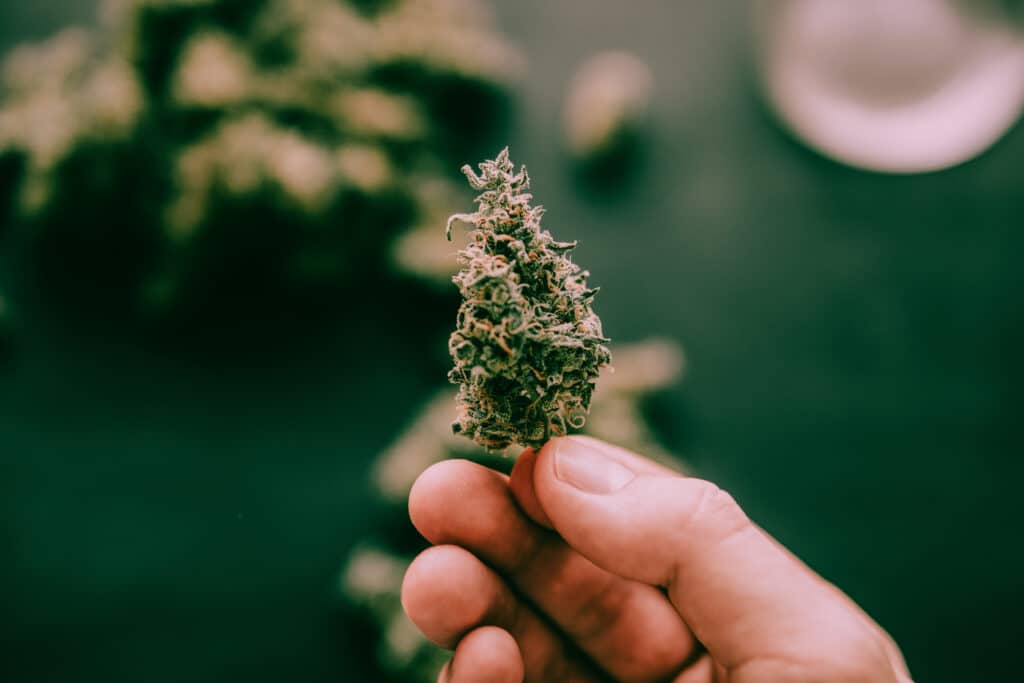
The pros and cons of mid-grade cannabis
Mids are better than low-grade dirt pot but are disadvantaged compared to loud weed. They’re not extremely strong but offer far more enticing benefits for new or moderately experienced users.
Let’s explore their advantages and disadvantages.
Pros
- Mids are cheaper than top-shelf marijuana.
- They’re more colorful, with greener shades than low-class strains.
- They provide a noticeably blazed high for first-time users and decent, comfortable sensations for seasoned users.
- They deliver a superior experience compared to substandard brick bud with cheap coverings.
- Mids carry fewer stems, so they’re easier to grind and smoke. They taste better, too.
- It’s easy to find high-quality weed that delivers a memorable, worthwhile experience.
Cons
- If you’re accustomed to the smell of high-quality bud, users report that mids have a slightly moldy scent in comparison.
- The smoke might be slightly harsher than dank, and a common side effect is a dry mouth.
- A bud from mids is less colorful and doesn’t taste as good as premium dank.
How mid-grade cannabis compares with other categories
There are four categories of marijuana: regs, mids, headies, and beasters.
Most users rank them into three primary grades, each with unique properties and effects. They may seem closely related, but there are vital distinctions to understand.
Let’s explore them and see how mids compare to low and high grades.
Low-grade vs. mid-grade weed
Low-grade marijuana is also called reggie, schwag, ditch, or dirt weed. It’s prevalent in regions where the plant is illegal, as it doesn’t require sophisticated growing methods.
Sometimes, you may want to grow first-rate crops but end up with low-class bud because of improper growing practices.
In other cases, lower-class strains are common among those just entering the pot-smoking scene. Some even turn to them as a last resort if they can’t find anything else.
Cannabis connoisseurs rank them as C-grade marijuana, as they’re at the bottom of the tier.
Mexican brick weed is a famous type of low-quality weed that’s become scarce. It originates from Mexico and typically grows in large fields.
People smuggled it into the US as a compressed solid brick, hence the name.
Thankfully, increasing legalization moves by many states across the US means less low-quality weed and more mid to high-grade.
Here’s how the lower class differs from mids weed:
- They have a lower THC content. Seasoned smokers of high-quality cannabis may need to use more low-grade weed to have a noticeable effect.
- They typically have a slightly unpleasant, harsh, and spicy flavor.
- They may cause undesirable effects like headaches in some users.
- They’re cheaper, with dull green colors, a brown haze, high seed content, and more stems.
High-grade vs. mid-grade weed
High-grade cannabis is also known as top-shelf or dank weed, find on the highest shelves in dispensaries.
It usually comes from superior seeds carefully bred to produce the best buds.
Cultivators who grow high grades do so in controlled environments like marijuana greenhouses. They use more organic means of growth than chemicals, ensuring exceptional plant yields.
Tokers in states where pot is legal, like San Francisco, prefer this type. Due to their first-rate nature, many use high-THC strains for medicinal and recreational purposes.
Celebrities and individuals with a taste for premium products opt for these premier-grade strains. Their colors and fragrances are heightened compared to mid-grade, which prompts some to refer to it as “loud weed.”
Top-shelf strains differ from mids weed in the following ways:
- Their THC level is typically high. Most range between 20 and 25%, and some even reach over 30%.
- Users report feeling the herb’s euphoric effects almost immediately and for longer than those from mids weed.
- They’re more expensive.
- They have a pleasant scent that starts from cultivation and persists until you consume them.
- Prime buds look puffy and dense and display bright hues.
- The buds don’t produce any choking or coughing effect when smoking them since they’re seedless.
- Their nugs glitter more when exposed to light because of their prominent trichome crystals covered in sticky resin.
Where to buy mid-grade weed?
The best place to buy mids is from a licensed dispensary that stocks a variety of strains. They should keep different levels of potency, THC levels, and effects.
Be cautious if you buy from a roadside peddler or street vendor. Unscrupulous sellers may try to pass off reggie weed as a mid at the same price to get more sales and profits.
Rather find a reputable source where you know you’re getting what you want.
If you’re looking for the best marijuana varieties, including seeds and essential cultivation products, visit The Seed Fair.
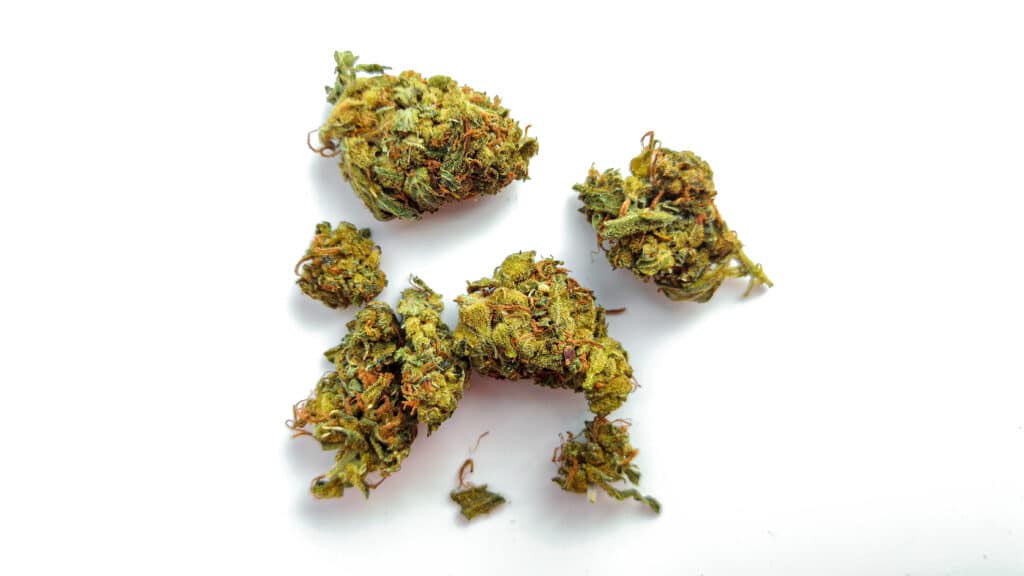
Know your cannabis quality
Knowing the quality of the marijuana you consume ensures you get more desired effects.
If you’re on a budget, you can get preferable results from mids instead of spending more on high-grade weed.
Besides offering you top-notch strains, The Seed Fair provides essential information regarding cultivation, feeding schedules, lighting, and taking proper care of cannabis.
Find more details on how to differentiate between various weed types and take the next step toward becoming a cannabis expert.
FAQs about mid-grade weed
Still have questions about mid-grade marijuana? Find answers to the most common queries below.
Does weed grade matter?
Yes, it matters. Cannabis grades are essential in classifying the qualities of different plants. Consuming top-notch buds ensures you get the best results.
It may also help to distinguish plants with high cannabinoid concentrations from those with low ones. Trying a higher grade can provide better effects if your tolerance level has increased.
How do you know if you smoke mid grade weed?
The fragrance a strain produces is a clear sign you’re dealing with mids. It typically exudes a floral or grassy smell but is usually fainter than a prime strain.
If you smoke a joint and notice an enticing floral scent, you could be dealing with a mid.
Mid-quality weed isn’t premium and may have some small amounts of seed.
What strain of weed is high-grade?
A high-grade strain has soaring THC content and sometimes more CBD. Experienced growers usually cultivate dank weed using sophisticated and modern methods.
Top-shelf weed produces quality buds and is expensive to buy. Users on a budget get value for their money with high-class strains.
Examples of loud weed strains include Purple Punch, Face Off OG, and Durban Poison.
Which weed is best for beginners?
Medium-rated weed is an excellent starting point for beginners as it balances premium and average marijuana types.
Mids provide a more moderate high than regs weed, but smoking them is usually manageable and not overwhelming. They’re fantastic choices if you want to accustom yourself to more potent strains and maintain a comfortable experience to build upon.
What are the three tiers of weed?
The three tiers of marijuana include low, middle, and high-grade weed, representing specific qualities like THC levels and effects.
Vendors usually store low-class buds on bottom shelves, medium in the middle, and top-shelf cannabis at the highest point. It makes it easier for customers to spot what they’re looking for, depending on their needs.


